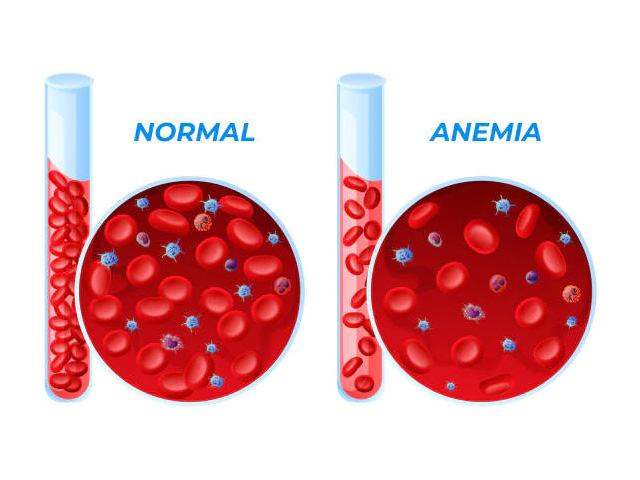
What is Anemia?
Anemia is a condition when the body does not contain enough red blood cells. The red blood cells contain hemoglobin molecules. These molecules are responsible for carrying oxygen. Anemia can either occur when there are too few red blood cells in the body or when their hemoglobin content is abnormally shaped or low.
Anemia affects about 25% of the world’s population. Women have a higher risk of being anemic than men due to biological processes such as menstruation, pregnancy and childbirth. Preschool children are also at high risk. It is estimated that almost half of 0-6 year olds worldwide are anemic.
Causes of anemia
There are many subtypes of the disease and causes change by type:
- Iron deficiency anemia: The bone marrow needs iron to make the hemoglobin needed by red blood cells. Without enough iron, the hemoglobin needed to make red blood cells cannot be produced. This type of anemia occurs in many pregnant women who do not take iron supplements. Also, heavy menstrual bleeding, stomach ulcers and cancer can cause iron deficiency anemia.
- Vitamin deficiency anemia: In addition to iron, the body needs folate and vitamin B12 to produce enough healthy red blood cells. A diet deficient in these vitamins can lead to reduced red blood cell production. Also, some people who get enough B12 have trouble absorbing the vitamin in the intestines. This malabsorption can lead to vitamin B12 deficiency anemia, also known as pernicious anemia.
- Chronic disease anemia: Some inflammatory diseases such as cancer, HIV/AIDS, rheumatoid arthritis, kidney disease, Crohn’s disease, etc. can interfere with the production of red blood cells.
- Aplastic anemia: Aplastic anemia is a rare but life-threatening type of the disease. It occurs when the body does not produce enough red blood cells. Causes of aplastic anemia include infections, certain medications, autoimmune diseases and exposure to toxic chemicals.
- Bone marrow disease anemia: Various diseases such as leukemia and myelofibrosis can trigger the disease by affecting new blood cell formation in the bone marrow.
- Hemolytic anemia: Hemolytic anemia occurs when the destruction of red blood cells is faster than their production. Some blood disorders increase red blood cell destruction. Hemolytic anemia can be inherited from parents or can occur later in life.
- Sickle cell anemia: Sickle cell anemia is an inherited type of hemolytic anemia. It is caused by a faulty form of hemoglobin that results in abnormal sickle-shaped red blood cells. These abnormally shaped blood cells die prematurely, causing a life-time shortage of healthy red blood cells if not treated.
What are the symptoms of anemia?
Symptoms of anemia vary depending on the type of anemia, its severity and underlying health problems such as bleeding, stomach ulcers, menstrual problems or cancer. Specific symptoms of underlying problems can often be recognized before the symptoms of anemia itself. The body also has an extraordinary ability to compensate for early signs of anemia. If the case is mild or develops slowly over a long period of time, no symptoms may be noticed. Symptoms common to many types of anemia include:
- Easy fatigue and loss of energy
- Unusually fast or irregular heartbeat, especially during physical exercise
- Shortness of breath
- Chest pain
- Headache
- Dizziness
- Skin pallor
- Cramps in the legs
- Insomnia
How is anemia treated?
All treatments aim to increase the number of red blood cells. This increases the amount of oxygen carried by the blood. Treatment is planned depending on the type and cause of the disease.
For example, vitamin or iron supplements and dietary changes are effective in nutritional iron deficiency caused cases. If the problem is caused by blood loss, treatment consists of locating and stopping the bleeding. In the case of chronic disease anemia, doctors will consider treating the chronic condition in question.

